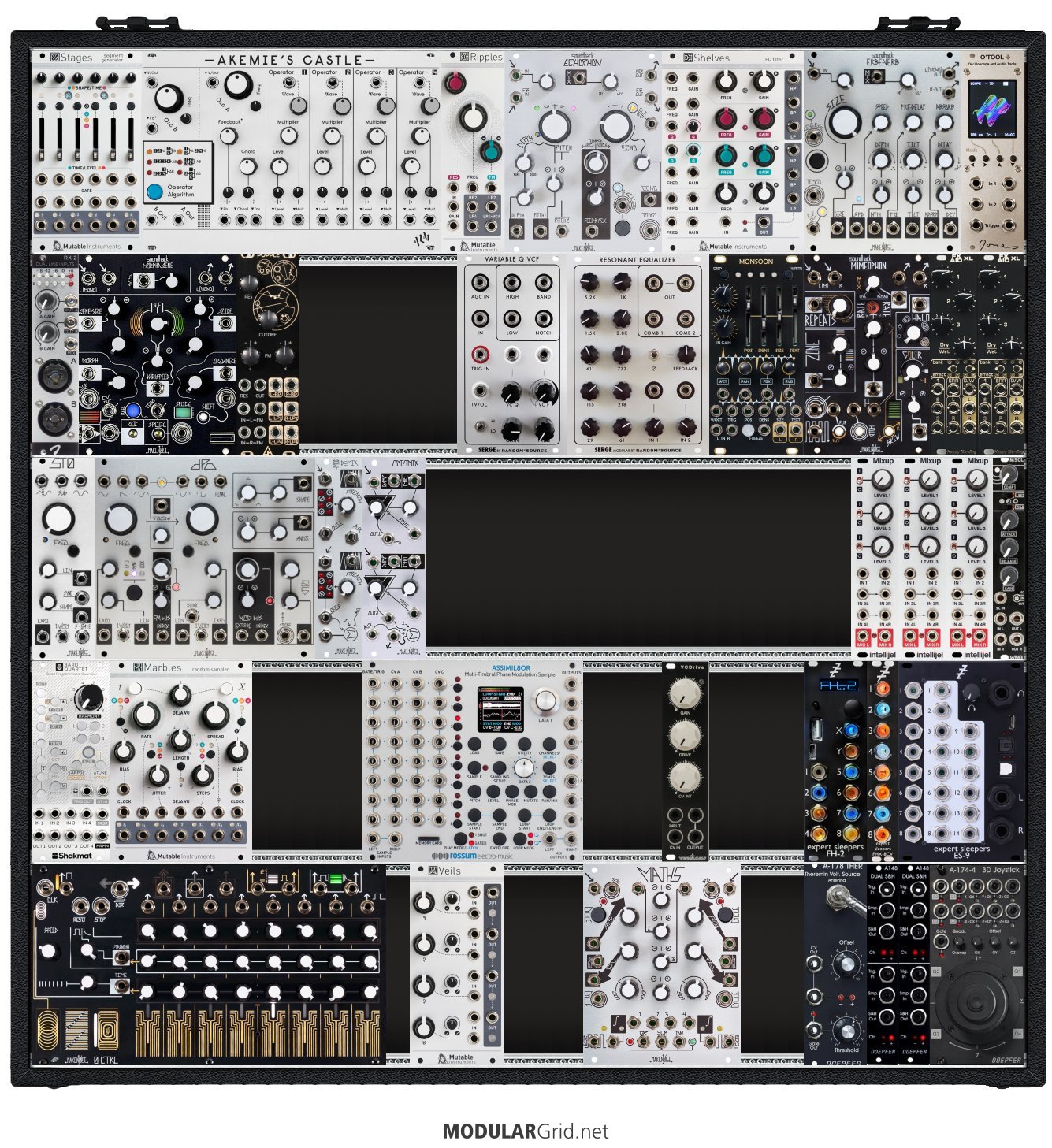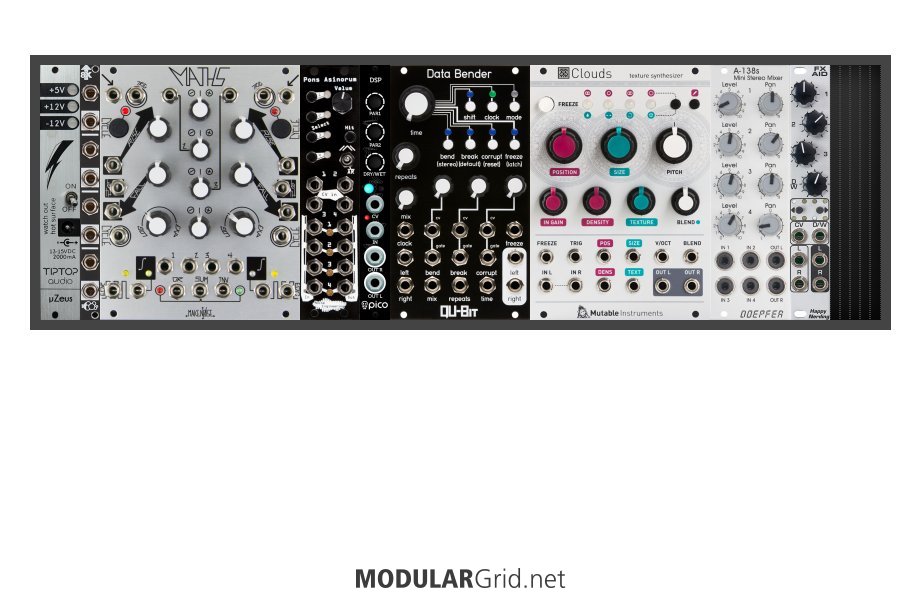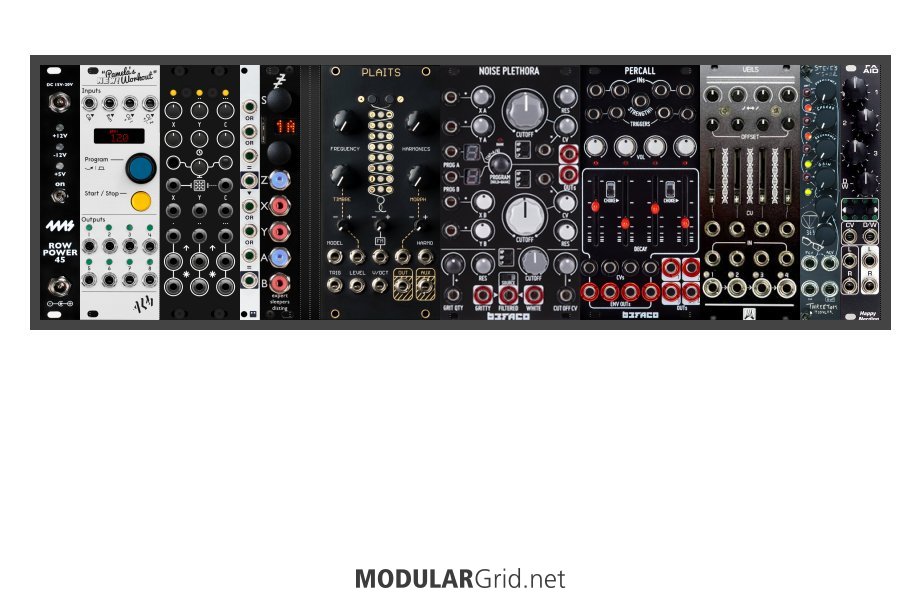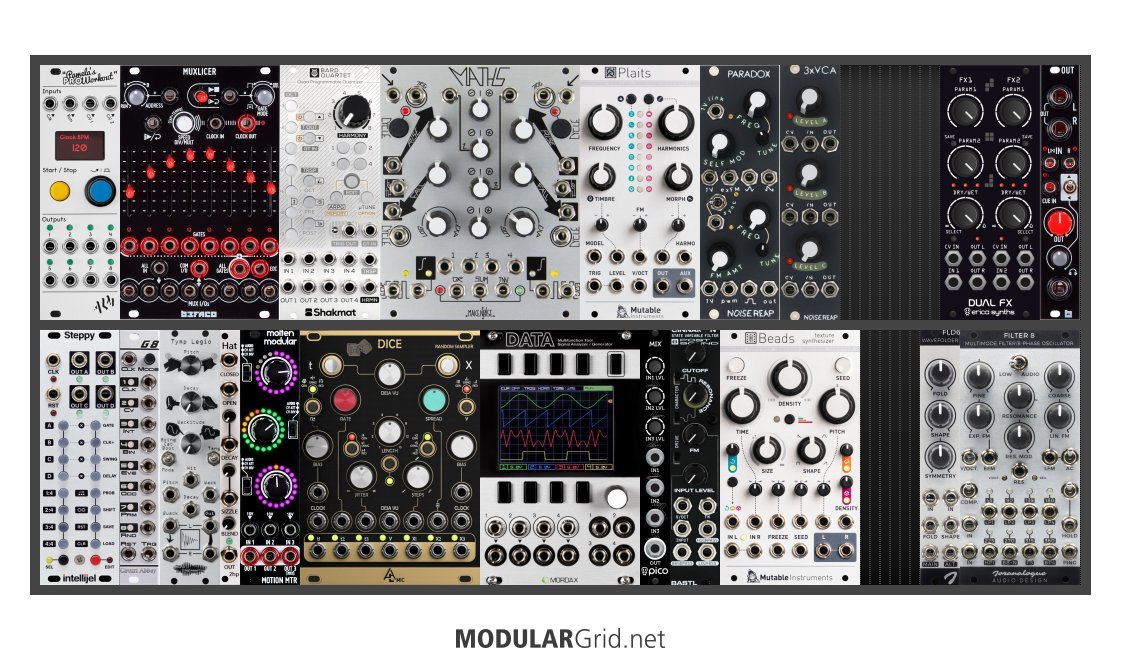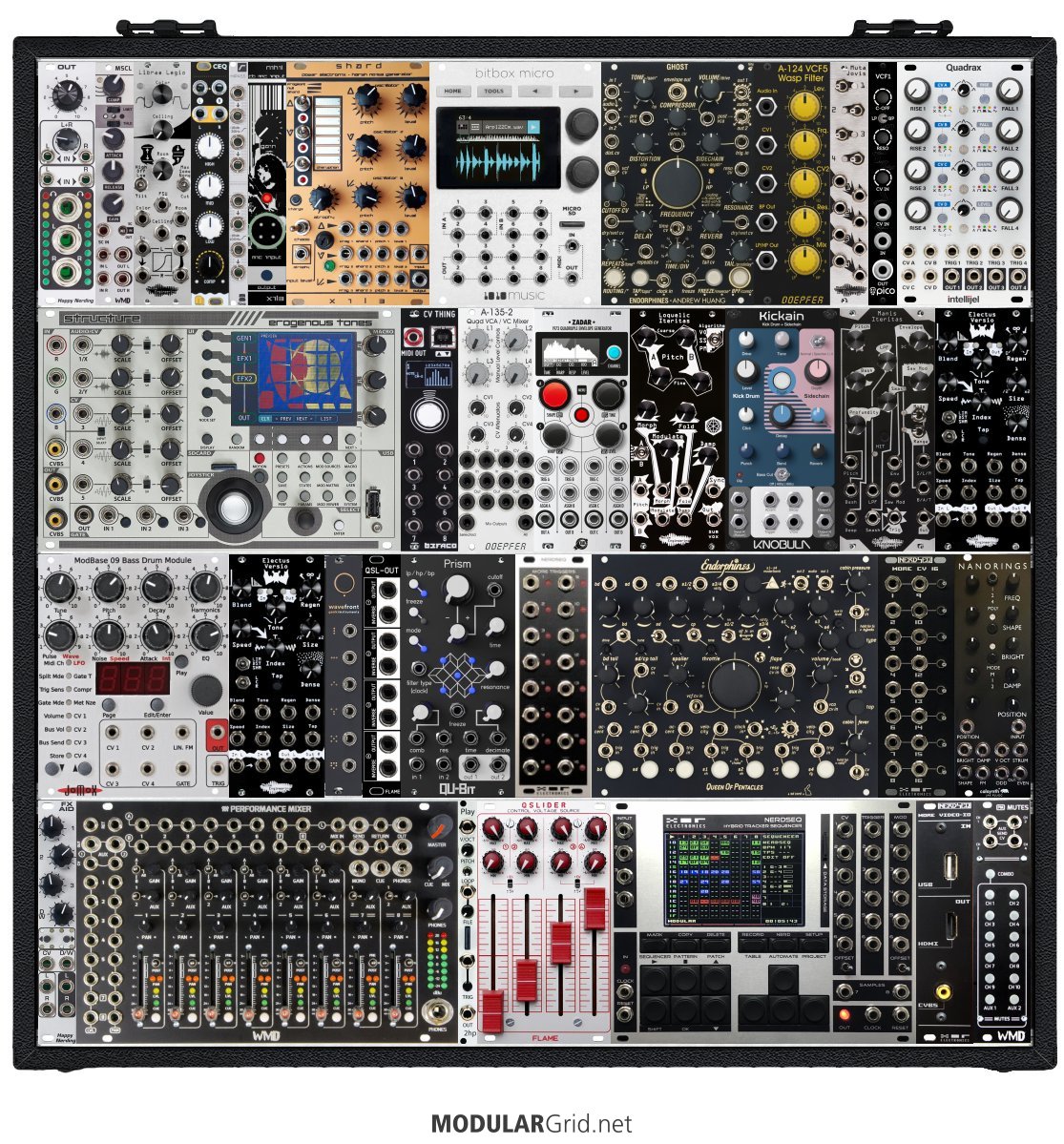
Hey folks,
I want to share some ideas with you that I figured out in the last year, building this Rack/Patch.
I'm dying to hear your ideas for optimizing or pushing it further in any interesting kind of way.
I've limited myself to this 4 rows of 104 TE (MDLR-Case, Performer Series) and want to achieve:
a Techno-Live-Gig-Rack without external gear, but with both: sound and visual output.
The rack started in march '21 and the setup is now in version 3 - I'm nearly where I wanted to be with it. The Setup could (can) run the Kick-drum and most of the voices in a technically "danceable" way for 60 min. on its own (NerdSeq, of course).
I want to focus on mostly changing the modulations, give completely new Input (e.g. microphone) or interrupt / change the whole schedule / procedure.... live... for the sound and for the visuals.
I think of it in "blocks":
**Control block:
- NerdSeq
- 2x CV16 expander
- Trigger 16 expander
- More Video I/O expander
- QSlider
- PM Mutes
- Genki Wavefront + Ring (on my right hand)
- special DIY microphone (connected to X1L3 Shard Input via "t.bone Sync1")
NerdSeq is controlling nearly all the voices via outputs and expanders. NerdSeq channels programmed:
- on channel 1 is the Trigger 16, running drums and some specials
- channels 2 - 5 are for all the controlled voices
- channel 6 is for special modulations and video CV-controlling
- channel 7 runs samples from NerdSeq directly into PMixer
- channel 8 is the video programming channel, where mostly Text and full picture colours / strobes are going out through the More Video I/O => CVBS
**Kickdrum block:
- ModBase 09 MkII
- Ghost
- Kick + rumble; Ghost as send fx (100% wet), mixed again in PMixer. For some tracks I layer a "small" Queen of Pentacles Kick (from the separated output) additionally into PMixers Kick-channel... Presets of ModBase are controlled by NerdSeq CV.
**Voice blocks:
- BIA => Pico VCF1 => PMixer
- Manis Iteritas => PMixer
- Loquelic Iteritas => Quad VCA => PMixer
- NanoRings => PMixer
- 2hp Play => PMixer
- Queen of Pentacles => PMixer
- Bitbox Micro => PMixer
Everything obvious. Bitbox Micro is playing an intro (triggered by NerdSeq via CV-Thing) and some fx-samples. Otherwise I shoot some fx-samples via touch display or (not live) record stuff from the ambient-voice going through Bitbox.
**Ambient block:
- X1L3 Shard => WASP Filter => Electus Versio => Quad VCA => Bitbox Micro (only tru) => PMixer
The Quad VCA recieves a Kick-sidechaining-signal from Roti Pola: Envelopes from Messor + Ghost are mixed. Ambient block can "pump".
**Mix/Master block:
- PMixer main out => Prism => Messor => HN Out (main input)
- PMixer cue out => FX Aid as a "big room" Reverb => back to PMixer
- PMixer aux 1 out => Imitor Versio (running Electus Versio firmware) => HN Out (2nd input)
Prism acts like a Master-HiPass-Filter with special short-delay-FX, controlled by the Q-Slider. Pressing the button on Genki-Ring opens signal path coming from PMixer cue out via Quad VCA, so selecting the send-elements works with cue buttons. Via PMixer aux 1 I send a small amount of elements to create a general atmosphere in the background.
**Modulation block:
- Quadrax
- Zadar
- CV Thing
- Genki Wavefront + Ring
- Muta Jovis
Quadrax for envelopes and modulations, Zadar only for modulations. CV ThingUSB out => Structure USB in; this makes presets of structure available to be controlled via CV from NerdSeq. CV Things TRS-Midi-out is connected to Bitbox Micro, so theres another option to control Bitbox via CV. I use three channels of CV Thing to only display the current value of Genki Wavefront's outputs. This way I've got the WASP-filter for ambient-sweeps and/or e. g. main voice's envelope length "in one finger". The ring can of course temporary be de/activated and Muta Jovis can "kill" some modulation connections.
**Visual block:
- NerdSeq more Video I/O via CVBS => ET Structure => CVBS to HDMI => ext. display
The saved presets of Structure are controlled by USB-Midi-Signals, coming from CV-Thing.
Any opinions, suggestions or questions are welcome!


